Lynx
Lynx are medium-sized wildcats that live closer to you than you might think, in dense forests across the United States, Europe, and Asia. There are four main subspecies of lynx, one of which is the well-known bobcat. Bobcats can be found in almost every state in the US. The Canada lynx lives mostly in the boreal forests of Canada, and the Eurasian lynx lives in Europe and Asia, from France to Korea. The Iberian lynx has the smallest population by far and lives in just a few areas of Spain.
Though lynx are a type of big cat, they’re not nearly as big as lions or tigers. Most species are around the size of a labrador—even the largest don’t exceed the size of large dog breeds. They’re known for their distinctive short tails—also known as ‘bobbed’ tails, which is how the bobcat got its name. These tails are usually between 10 and 20 centimetres long, with black on the tip and, on some species, a white underside. They’re also known for the black tufts of fur that protrude from the tops of their ears. The purpose of this fur is currently unknown, but theories suggest it might help them hear or detect movement above their heads.
Lynx live primarily solitary lives, sticking to their own territory and making dens under fallen trees or in abandoned burrows. During the mating season, females only mate with one male, which results in fierce competition. After around two months, females give birth to one to four kittens and raise them alone. The kittens become independent at approximately ten months and will leave to find their own territory after around 20 months.
As an apex predator, the lynx is an animal that plays an essential role in its ecosystem. They regulate the populations of prey species, including rabbits, rodents, and deer, which protects vegetation from being over-consumed. Many European countries, including the UK, have lost their lynx populations and now suffer from overpopulation of species like deer.
What is a lynx’s scientific name?
The scientific name for the genus of lynxes is actually Lynx. The names of each of the four species start with this name, which originates from a Greek word meaning ‘to shine’ in reference to their reflective eyes. They are part of a subset of cats called short-tailed cats in the family Felidae, which also includes domestic cats, tigers, lions, and many more. The four species of lynx are known as:
- Lynx pardinus (Iberian lynx)
- Lynx lynx (Eurasian lynx)
- Lynx canadensis (Canada lynx)
- Lynx rufus (bobcat)
Are lynx endangered?
Bobcats, Canada lynx, and Eurasian lynx are listed as least concern on the IUCN Red List. However, the Iberian lynx is listed as endangered. Their current range is restricted to just two isolated areas in Spain, and the population is estimated to be 156 mature individuals. Their numbers are increasing, though. The latest assessment in 2014 changed their status from critically endangered to endangered.
Lynx face a variety of threats in the wild, including poor food availability, habitat loss and degradation, illegal hunting, and human collisions.
Where do lynx live?
Lynx are forest cats and prey on other forest animals. The Eurasian and Iberian lynx are found in the forests of Europe and Asia, while bobcats and Canada lynx live in North American forests.
The Eurasian lynx, as its name suggests, lives across Europe and Asia. It has a large range from France, Germany, and Italy to Russia, China, and Korea. The Eurasian lynx thrives better in less densely populated areas, and some densely populated countries have lost their original populations due to hunting and other factors. However, the loss of lynx is noticeable in the way it affects prey species like deer. Countries like Switzerland, Italy, Germany, and France have reintroduced lynx to their forests in an attempt to restore balance.
The Iberian lynx has a much smaller range. Historically, it covered Spain, Portugal, and parts of southern France, but now it is limited to just a few pockets in southwestern Spain. There are reintroduction efforts taking place in Portugal. The two main breeding populations live in Sierra de Andújar, Jaén, and Coto de Doñana National Park, Andalusia.
The Canada lynx relies primarily on one type of prey, the snowshoe hare. Their numbers rise and fall together, and the range of the Canada lynx is the same as the snowshoe hare. This range covers the boreal forests throughout Canada and a few US states: Washington, Idaho, Montana, Minnesota, New Hampshire, and Maine.
Bobcats are also a species of lynx, and they are primarily found in the US. Their range covers most of the continental United States, except for the agricultural heartland of the Midwest and parts of the East Coast, where hunting depleted their numbers. They can also be found as far south as Mexico and as far north as southern Canada.
Threats
The different species of lynx face similar threats in their respective ranges, including decreased food availability and habitat degradation and loss. Mortality rates are also increased by illegal hunting and human collisions.

Decreasing food availability
One of the main reasons for the Iberian lynx’s decline was the decline of its staple prey, the European rabbit. This happened due to a variety of reasons, including overhunting and disease. Without their primary food source, the number of Iberian lynxes naturally declined. Because the Canada lynx also relies on one primary prey, the snowshoe hare, they are susceptible to similar problems.
Habitat loss and degradation
Increasing urbanisation throughout the lynx’s ranges affects the amount of suitable habitat available to them. Bobcats suffer habitat loss when formerly wild areas become more densely populated with humans. For the Canada lynx, logging affects its home and the home of its primary prey. Increased road density also fragments existing habitats. The Eurasian lynx suffers from habitat loss in a range of countries, with increasing livestock pastures affecting habitat from China to Europe. Agricultural expansion in Spain contributed to the decline of Iberian lynxes in the 20th century, and now it affects the amount of habitat available for reintroduction efforts.
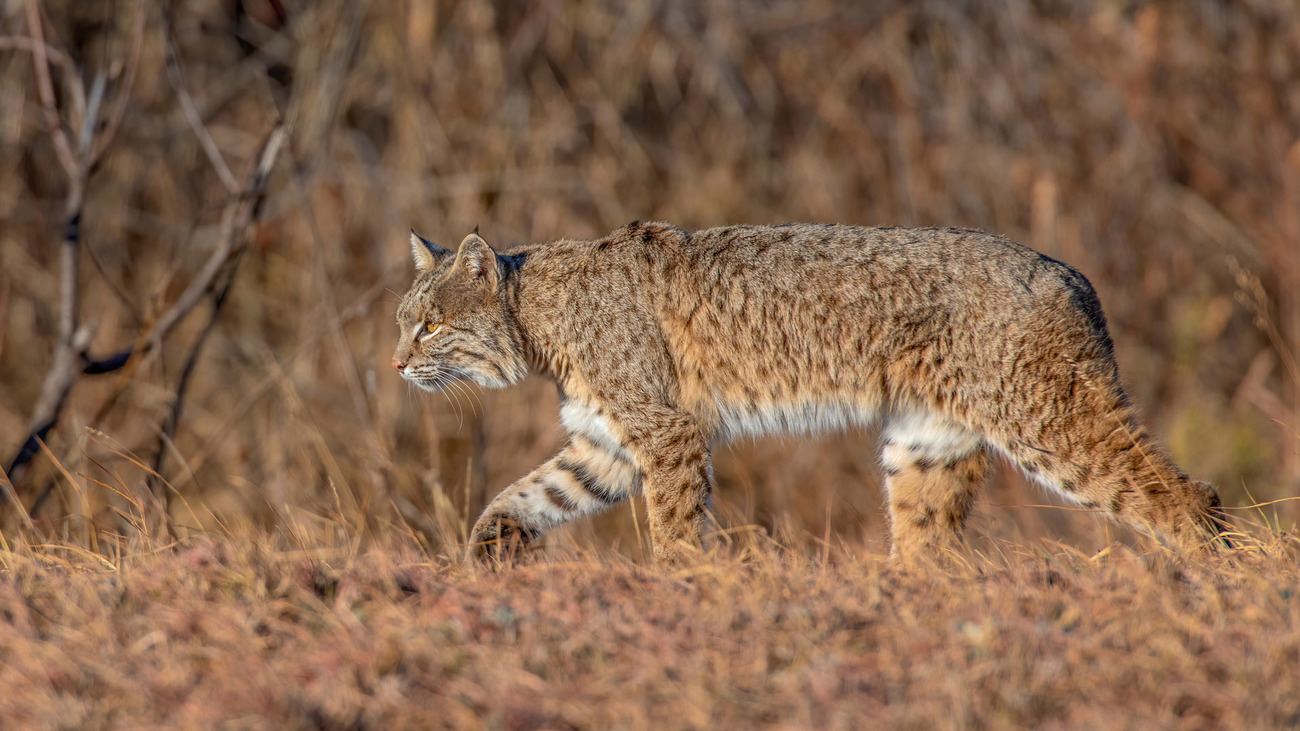
Illegal hunting
Bobcat pelts are exported from the US in large numbers, with a high of 65,000 for the year 2013. This undeniably affects bobcat numbers, but the US government’s research has found that this trade is not detrimental to bobcat survival. This might be the case for now, but with habitat loss increasing and climate change’s future impacts on habitat unpredictable, decreasing numbers for unnecessary reasons now could impact their survival long-term.
Hunting also affects the Eurasian lynx, which often comes into conflict with farmers. It’s unsure how much of a threat lynx pose to livestock, but farmers often take lethal measures to protect their animals. Traps intended for other animals can also lead to accidental lynx mortality.
Human collisions
All species of lynx, especially bobcats and the Canada lynx, suffer from vehicle strikes due to road expansion throughout their ranges. Bobcats are adaptable and can continue to live in areas where humans have developed the land. However, this increases their chances of being hit by vehicles. Because lynx are mainly active during the night, visibility is low, and the cats can move very fast, making it difficult for drivers to avoid them.
FAQs
What is a lynx?
A lynx is a type of wildcat that lives and hunts in forests all over North America, Europe, and Asia. They’re similar in size to labradors and eat a range of small animals like rodents and hares. There are four different species of lynx—the Eurasian and Iberian lynxes live in Europe and Asia, and bobcats and Canada lynx live in North America. The Iberian lynx is generally the largest species, followed closely by the Canada lynx.
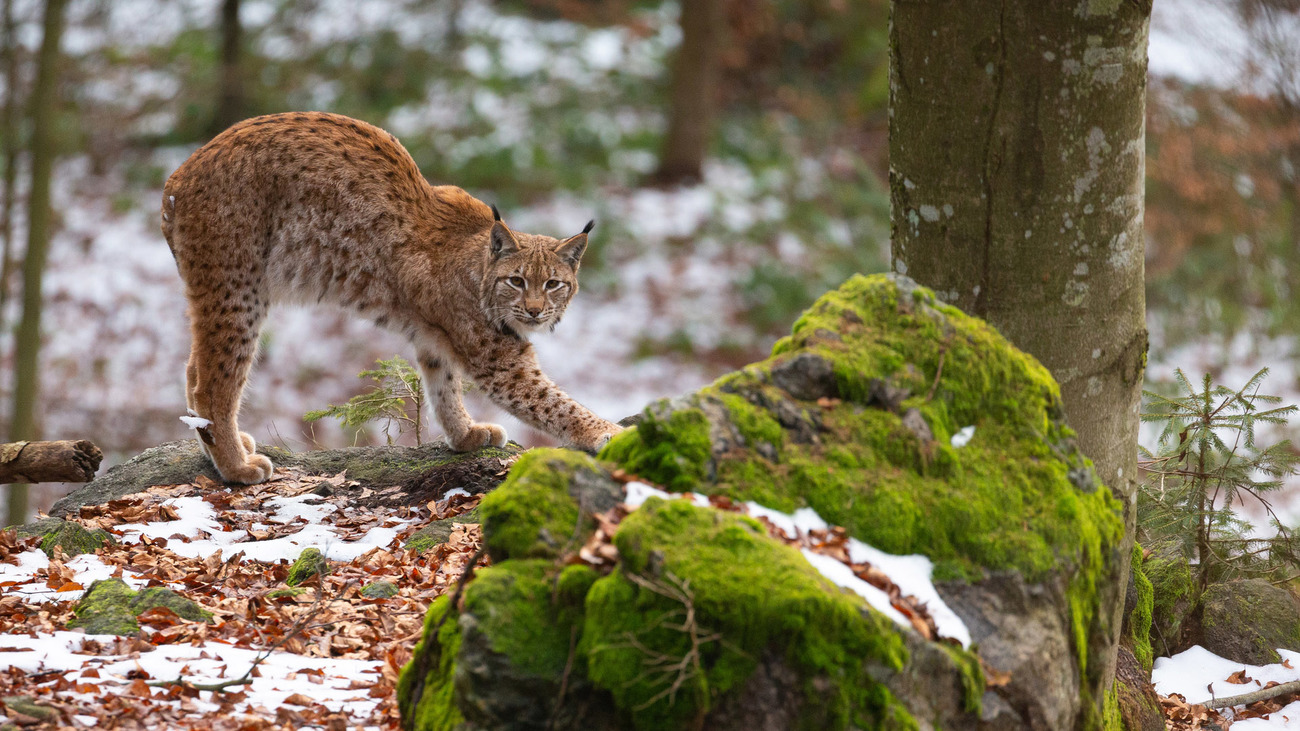
What does a lynx look like?
Lynx are bigger than house cats, but they’re not massive like lions or tigers. Two of their most distinctive features are the dark, pointed tufts of hair on their ears and their short, stubby tails, which are generally 10-20 centimetres long. A lynx’s fur can be a range of colours, from light brown or rusty red to grey, with dark spots for camouflage. They also have longer tufts of fur on their cheeks that look like a beard.
Many lynx are well adapted to life in the snow. They have soft, fluffy fur that grows long in the winter and wide, furry paws that make it easier to traverse snow-covered landscapes. The exception to this is the bobcat, which doesn’t live in snowy regions—its fur is shorter and stiffer. You can also differentiate a bobcat from another species of lynx because the underside of its tail is white.
Are lynxes dangerous?
Lynx typically ignore humans and are mostly active at night, so they don’t pose a threat to people in general. However, when cornered, a lynx may feel threatened and could attack in self-defence. There are also concerns about lynx and livestock. Some incidents suggest that lynx sometimes kill more animals than they can eat. However, the truth around this issue is uncertain, and it’s mostly discussed in the UK, where the pros and cons of lynx reintroduction are being considered.
What do lynxes eat?
Lynx are carnivores, and they hunt other animals for food. Each species has its own eating habits. The Canada lynx targets snowshoe hares, and the Iberian lynx eats mostly European rabbits. Bobcats eat a mixture of rabbits, hares, birds, and rodents, and the Eurasian lynx is big enough to hunt deer. All four species have great hearing and eyesight, so they can spot even the smallest prey hundreds of metres away, even though they hunt at night.
How big is a lynx?
The four different species of lynx each grow to slightly different sizes, with females always being smaller than males. Bobcats are the smallest species, reaching 60–100 centimetres in length and standing 50–60 centimetres at the shoulder. The Iberian lynx is a little bigger, growing up to 80–130 centimetres in length and 45–70 centimetres tall. The Canada lynx is a similar size, ranging from 67–107 centimetres in length, while their average height is 61 centimetres.
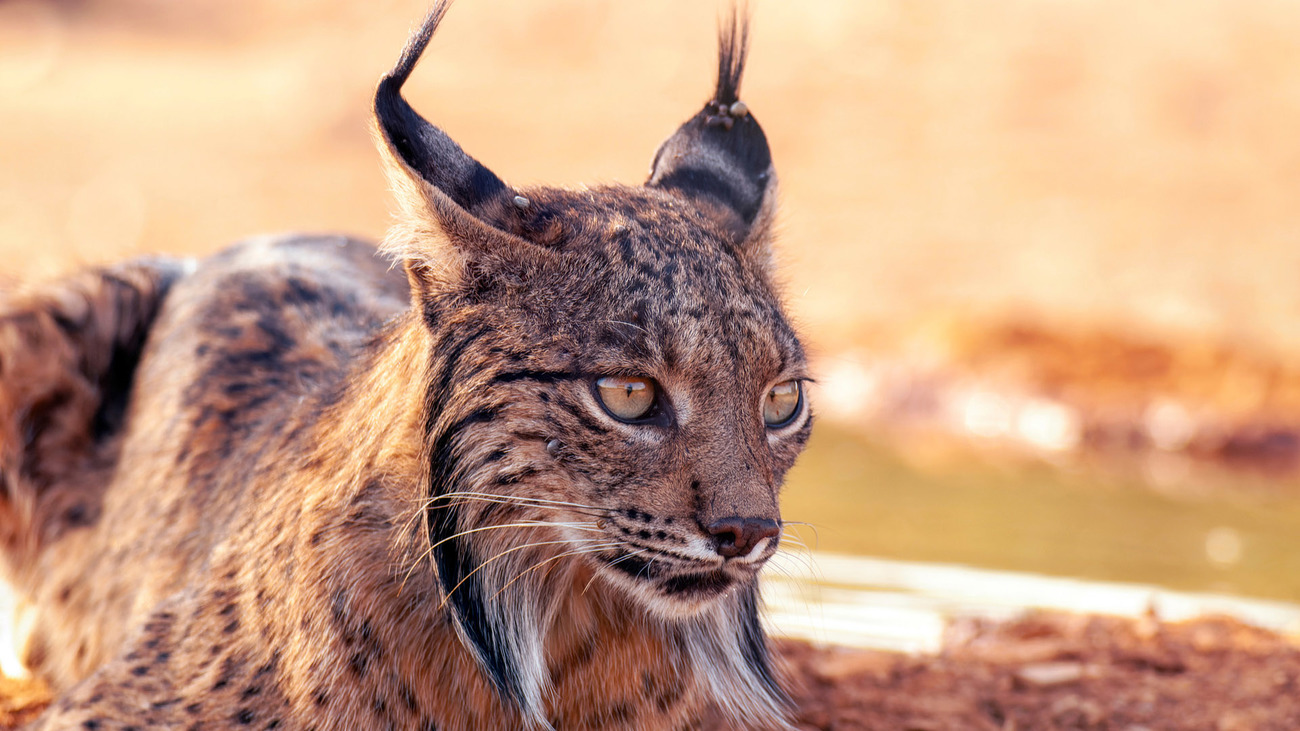
How much do lynx weigh?
The different species of lynxes also weigh different amounts, with the lightest being bobcats, which usually weigh between 7 and 15 kilograms. The Iberian lynx weighs between 10 and 15 kilograms, and the Canada lynx can weigh anywhere between 8 and 17.3 kilograms. The heaviest species is the Eurasian lynx, whose lightest individuals weigh as much as the heaviest Canada lynxes. The weight range for a full-grown adult Eurasian lynx is between 18 and 36 kilograms.
Is a lynx a cat or a tiger?
Lynx are a genus of short-tailed cat from the family Felidae. This family also includes other types of cats, including cheetahs, lions, leopards, domestic cats, and tigers. Both lynx and tigers are cats, but lynx are not tigers. Unlike tigers, lynx have very short tails that usually reach between 10 and 20 centimetres in length.
Is a bobcat a lynx?
Yes, bobcats are one of the four species of lynx.
What’s the difference between a bobcat and a lynx?
Bobcats are one of four lynx species. However, bobcats are the species least adapted to snow, so they have shorter, stiffer fur and smaller paws than the other three lynx species. They also have a white underbelly that some other species don’t have.
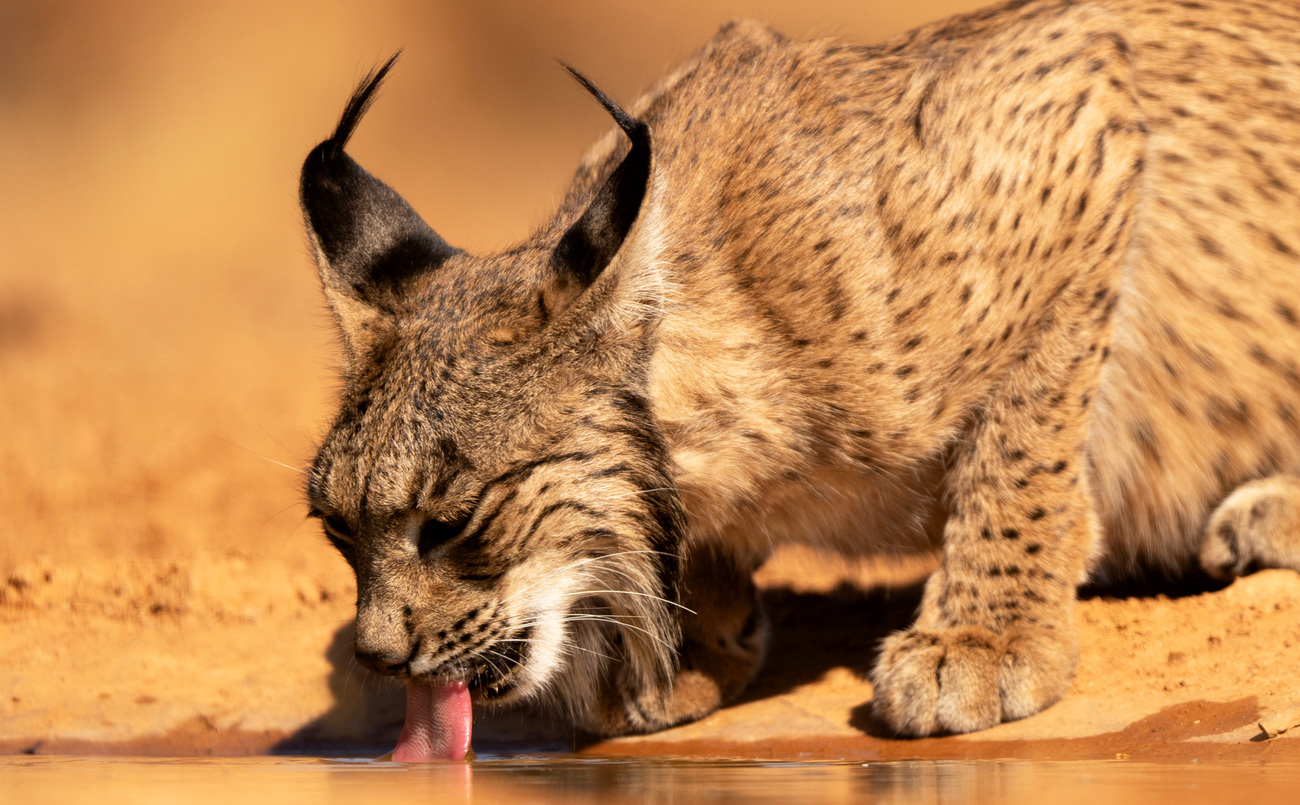
What does a lynx sound like?
Lynx don’t sound like other cats. Instead of mewing or roaring, they make a strange wailing sound that randomly picks up and trails off. The sound can become deep and growly at some points, and when cats make contact with each other, it turns into a screech.
Are lynx endangered?
Three of the four lynx species are listed as least concern on the IUCN Red List, but the Iberian lynx was recently critically endangered and is now listed as endangered. They have a small population size of just 156 mature individuals and a limited habitat. They struggle with threats like limited food availability, habitat loss, hunting, and collisions with vehicles.
Can you have a lynx as a pet?
No, lynx are wild animals and should not be kept as pets. They thrive best in their natural habitat. They’re also not suited to human contact since they usually avoid humans in the wild. They also might attack humans if they feel threatened.
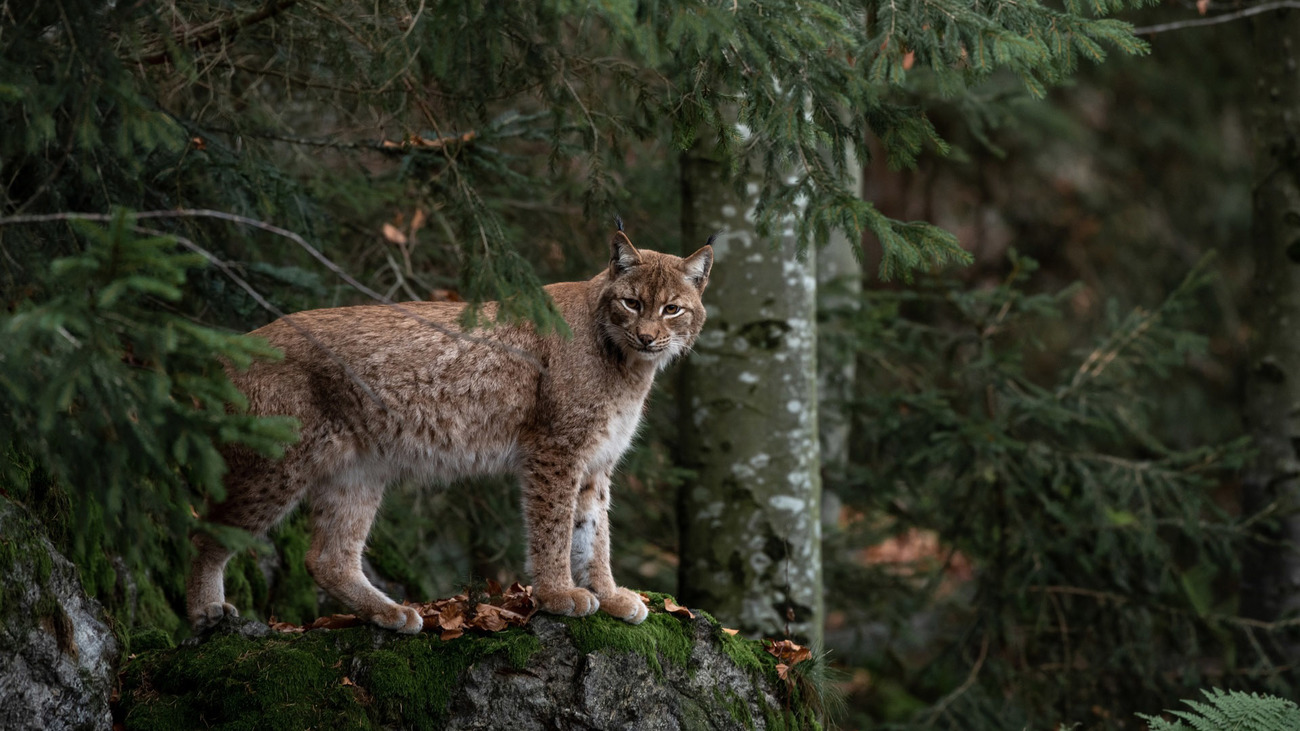
How can you help?
Lynx face threats of decreasing food availability, habitat loss, illegal hunting, and human collisions.